AWS News Blog
New AWS Auto Scaling – Unified Scaling For Your Cloud Applications
I’ve been talking about scalability for servers and other cloud resources for a very long time! Back in 2006, I wrote “This is the new world of scalable, on-demand web services. Pay for what you need and use, and not a byte more.” Shortly after we launched Amazon Elastic Compute Cloud (Amazon EC2), we made it easy for you to do this with the simultaneous launch of Elastic Load Balancing, EC2 Auto Scaling, and Amazon CloudWatch. Since then we have added Auto Scaling to other AWS services including ECS, Spot Fleets, DynamoDB, Aurora, AppStream 2.0, and EMR. We have also added features such as target tracking to make it easier for you to scale based on the metric that is most appropriate for your application.
Introducing AWS Auto Scaling
Today we are making it easier for you to use the Auto Scaling features of multiple AWS services from a single user interface with the introduction of AWS Auto Scaling. This new service unifies and builds on our existing, service-specific, scaling features. It operates on any desired EC2 Auto Scaling groups, EC2 Spot Fleets, ECS tasks, DynamoDB tables, DynamoDB Global Secondary Indexes, and Aurora Replicas that are part of your application, as described by an AWS CloudFormation stack or in AWS Elastic Beanstalk.
Update: On April 24, 2018 we added the ability to describe your application using resource tags. Read the What’s New to learn more.
You no longer need to set up alarms and scaling actions for each resource and each service. Instead, you simply point AWS Auto Scaling at your application and select the services and resources of interest. Then you select the desired scaling option for each one, and AWS Auto Scaling will do the rest, helping you to discover the scalable resources and then creating a scaling plan that addresses the resources of interest.
If you have tried to use any of our Auto Scaling options in the past, you undoubtedly understand the trade-offs involved in choosing scaling thresholds. AWS Auto Scaling gives you a variety of scaling options: You can optimize for availability, keeping plenty of resources in reserve in order to meet sudden spikes in demand. You can optimize for costs, running close to the line and accepting the possibility that you will tax your resources if that spike arrives. Alternatively, you can aim for the middle, with a generous but not excessive level of spare capacity. In addition to optimizing for availability, cost, or a blend of both, you can also set a custom scaling threshold. In each case, AWS Auto Scaling will create scaling policies on your behalf, including appropriate upper and lower bounds for each resource.
AWS Auto Scaling in Action
I will use AWS Auto Scaling on a simple CloudFormation stack consisting of an Auto Scaling group of EC2 instances and a pair of DynamoDB tables. I start by removing the existing Scaling Policies from my Auto Scaling group:

Then I open up the new Auto Scaling Console and selecting the stack:
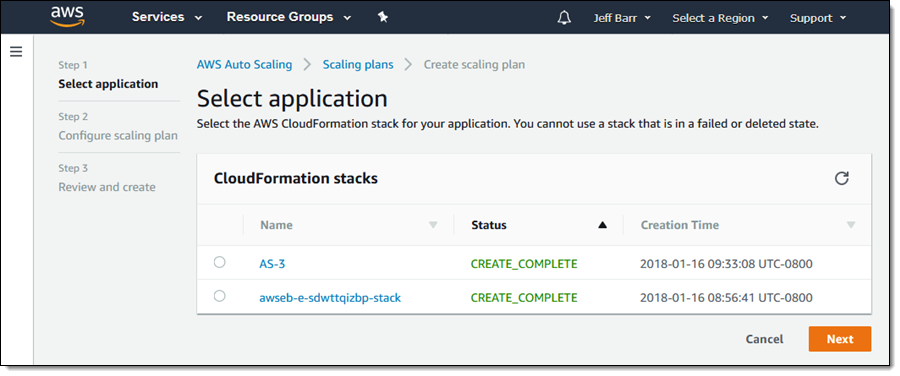
Behind the scenes, Elastic Beanstalk applications are always launched via a CloudFormation stack. In the screen shot above, awseb-e-sdwttqizbp-stack is an Elastic Beanstalk application that I launched.
I can click on any stack to learn more about it before proceeding:
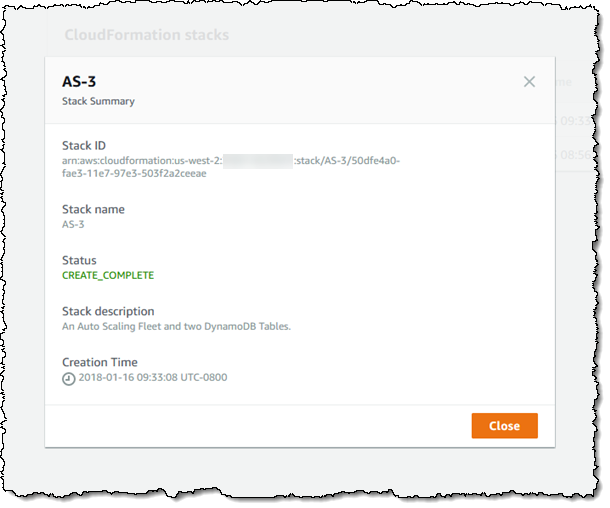
I select the desired stack and click on Next to proceed. Then I enter a name for my scaling plan and choose the resources that I’d like it to include:

I choose the scaling strategy for each type of resource:
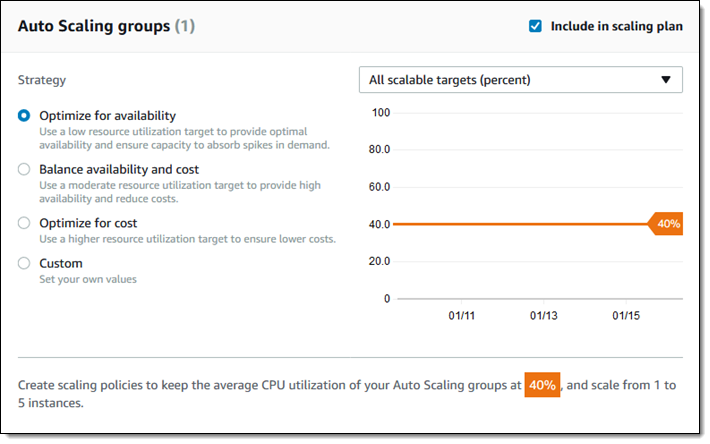
After I have selected the desired strategies, I click Next to proceed. Then I review the proposed scaling plan, and click Create scaling plan to move ahead:
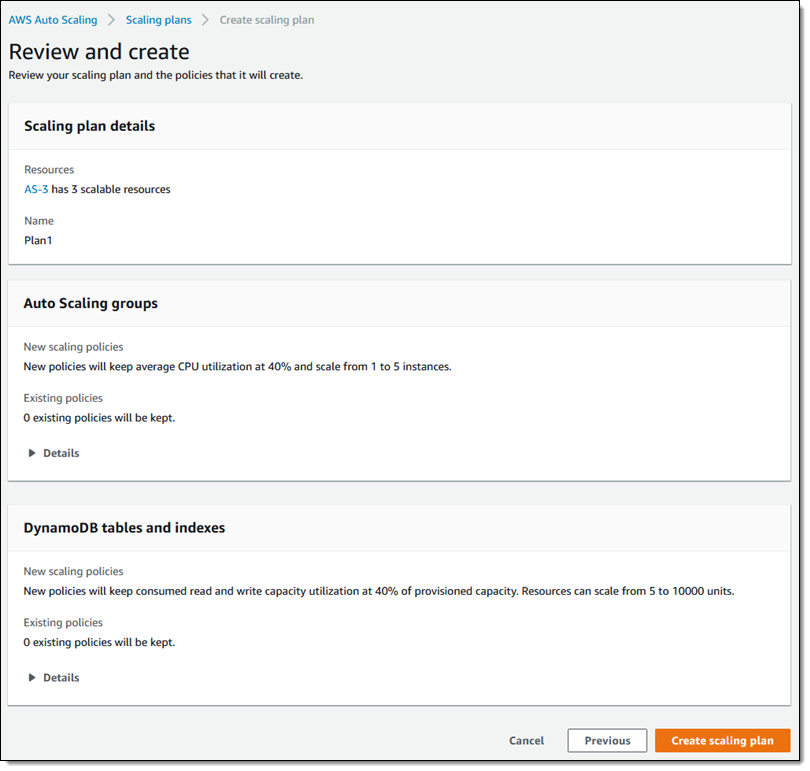
The scaling plan is created and in effect within a few minutes:

I can click on the plan to learn more:
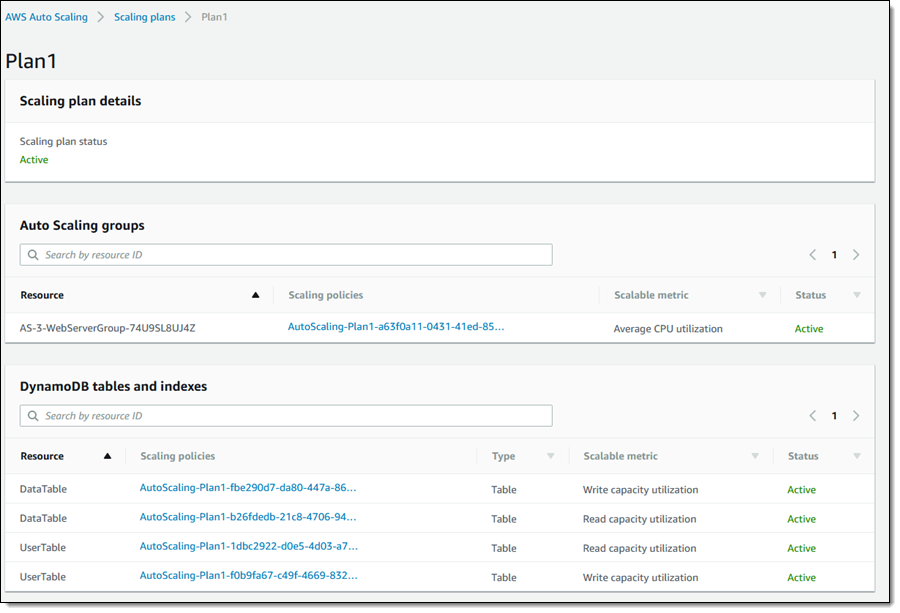
I can also inspect each scaling policy:
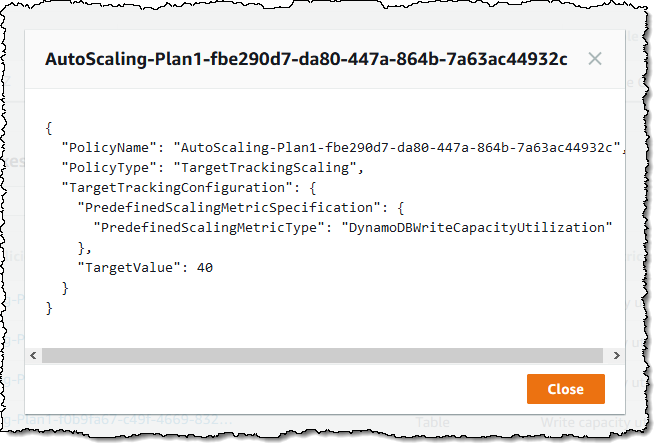
I tested my new policy by applying a load to the initial EC2 instance, and watched the scale out activity take place:

I also took a look at the CloudWatch metrics for the EC2 Auto Scaling group:
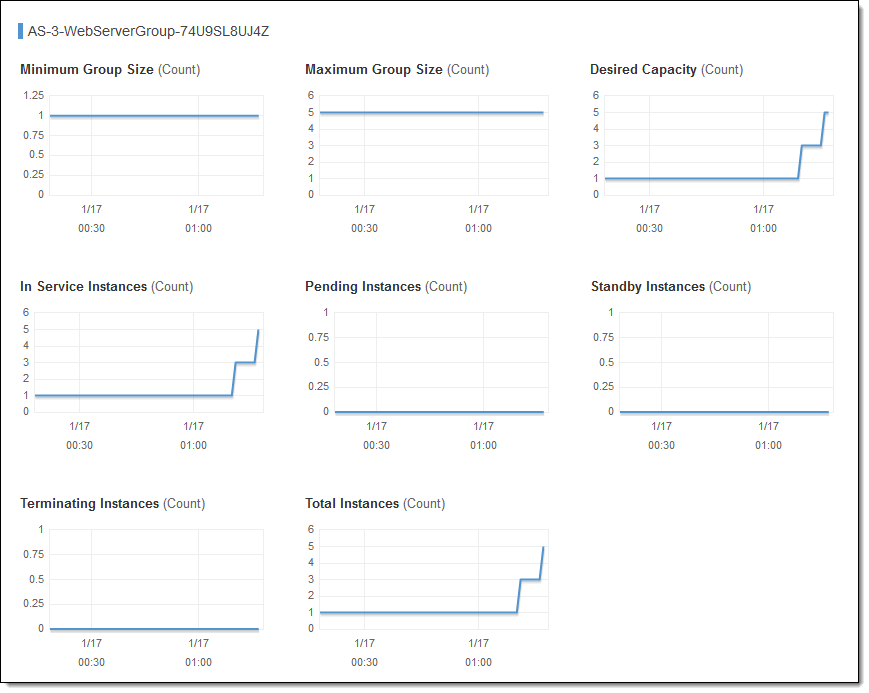
Available Now
We are launching AWS Auto Scaling today in the US East (N. Virginia), US East (Ohio), US West (Oregon), Europe (Ireland), and Asia Pacific (Singapore) Regions today, with more to follow. There’s no charge for AWS Auto Scaling; you pay only for the CloudWatch Alarms that it creates and any AWS resources that you consume.
As is often the case with our new services, this is just the first step on what we hope to be a long and interesting journey! We have a long roadmap, and we’ll be adding new features and options throughout 2018 in response to your feedback.
— Jeff;